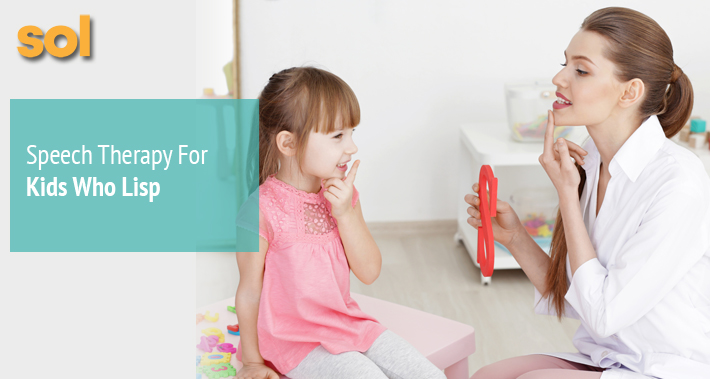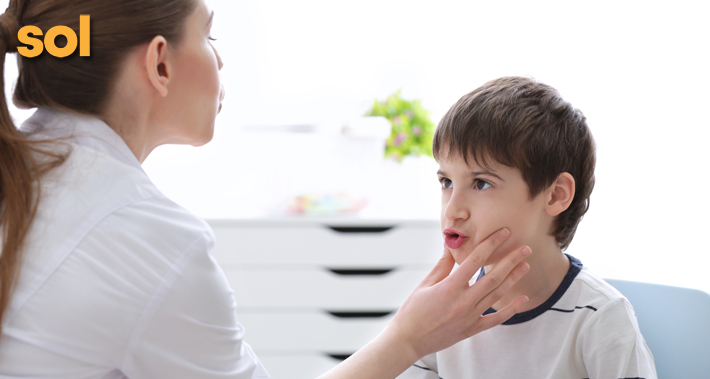
As a parent, it can be challenging to know when your child is hitting their appropriate speech milestones.
After all, every child is different.
If you notice your child having trouble pronouncing certain sounds like ‘z’ or ‘s’, it might mean they have a lisp.
But it might also mean they’re just developing normally.
After all, most kids pronounce words incorrectly at first, right?
As a parent, it can be hard to know what to do.
Do you just wait and see if they grow out of it?
Or do you pursue professional help right away?
Fortunately, it’s never too early to start speech therapy.
So if you’re looking for speech therapy for kids, you’ve come to the right place.
For now, let’s take a closer look at lisps – what they are, how they work, and how a speech pathologist can help.
What Is A Lisp?
A lisp is a type of articulation disorder that prevents your child from pronouncing certain sounds.
It’s most common with the speech sounds associated with ‘z’, ‘s’, and ‘r’.
If your child has a lisp, it means they struggle to articulate these sounds.
This is because their mouth isn’t making the right shape when they speak.
Often, children struggle with articulation when they can’t get their tongue, teeth, and lips to work together properly for certain sounds.
How To Tell If Your Child Has A Lisp
If you notice your child has trouble pronouncing letters like ‘s’, ‘z’, ‘-sh’, and ‘-ch’, they might have a lisp.
However, there are actually several different kinds of lisps.
Often it takes a professional speech therapist to identify which type of lisp your child has and how to improve it.
Let’s take a closer look at some of the different kinds of lisps.
1. Interdental Lisp
An interdental lisp is also known as a frontal lisp.
When you think of a lisp, this is likely what you think of.
If your child has an interdental lisp, it means their tongue sticks out between the front of their teeth when they pronounce certain letters.
This makes air flow out of their mouth forwards.
When they do this, it makes their ‘s’ and ‘z’ sound like ‘th’.
For example, your child might say “thoop” instead of “soup” or “eethy” instead of “easy”.
Interdental lisps are actually a normal part of speech development.
Up to about 5 years old, it’s normal for a child to speak with an interdental lisp.
However, if your child is speaking with an interdental lisp past this age, it’s time for intervention.
Remember, the sooner a speech therapist intervenes, the fewer bad speech habits your child will have to unlearn.
2. Dentalized Lisp
A dentalized lisp is similar to an interdental lisp.
If your child has a dentalized lisp, they also send air forward between their teeth.
However, unlike with an interdental lisp, this isn’t because their tongue is between their teeth.
Instead, it’s because your child’s tongue rests against the back of their front teeth.
It can sound very similar to an interdental lisp and might be hard to tell apart.
However, the sound that your child produces is more muted than if they have an interdental lisp.
Also, unlike an interdental lisp, a dentalized lisp isn’t a normal part of development.
That means it shouldn’t happen when your child speaks and it won’t go away on its own.
3. Lateral Lisp
A lateral lisp is a little bit different than the two types of lisps we’ve discussed so far.
Instead of your child pushing air forward out of their mouth, they push it out the sides.
This can make your child’s speech sound “wet”, like their mouth is full of moisture when they speak.
This type of lisp is also not a normal part of your child’s development.
If you think your child might have a lateral lisp, a speech therapist can help.
They’ll be able to assess what kind of lisp your child has and provide you the appropriate treatment and support.
4. Palatal Lisp
This is the fourth and final kind of lisp that your child can have.
A palatal lisp occurs when the middle of your child’s tongue touches their soft palate.
Your soft palate is located at the top back of your mouth.
If you run your tongue from the front of your mouth to the back of your mouth near your throat, you’ll be able to feel it.
Palatal lisps also aren’t part of normal speech development.
Just like with other lisps, your child will likely need help correcting this speech pattern.

Why Does Your Child Have A Lisp?
If your child has a lisp, they struggle specifically with their tongue placement on certain sounds.
If your child is younger than 5 years old or so, there’s not a big reason to worry.
However, if your child is older than that, their lisp probably isn’t part of a normal developmental process anymore.
In that case, it’s important to speak with a speech therapist.
Starting early with speech therapy will keep your child from solidifying their bad speech habits.
This means that their speech is easier to correct when they’re younger.
Additionally, if your child experiences tongue thrust, tongue tie, or has an overbite, they’re more likely to have a lisp.
When it comes to tongue thrust and tongue tie, your child might already be seeing a speech therapist.
If your child is prone to frequent upper respiratory illnesses, this can also cause them to speak with a lisp.
This is because your child will be used to breathing through their mouth, which can influence the development of their speech.
How Can A Speech Therapist Help?
First, your child’s speech therapist will identify what type of lisp your child has by watching and listening to them speak.
Once the type of lisp is established, your child’s speech therapist can work to correct it.
Your child’s speech therapist will help your child by teaching them the correct tongue placement when they speak.
They’ll also work with your child on jaw and teeth placement.
This might be in the form of exercises or games.
They’ll also be able to provide you with resources for supporting your child’s speech at home.
How Old Should Your Child Be To Get Treatment For Lisp?
Because a lisp can be a normal part of a child’s development, it doesn’t need to be addressed right away.
However, if your child is still experiencing a lisp past age 5, treatment may be a good idea.
Ideally, your child should see a speech therapist before the age of 6.
This keeps them from solidifying any bad habits and makes it easier to correct their lisp.
Book Your Appointment With Sol Speech And Language Therapy Today
If your child has a lisp and you’re unsure where to start, we can help.
At Sol Speech and Language Therapy, our licensed therapists are experienced in working with children to correct and overcome their speech issues.
Book your appointment with Sol Speech And Language Therapy today.
6448 E Hwy 290 Suite E-108,
Austin, TX 78723
(512) 368-9488
» https://g.page/r/CfRfhOpEQm7BEAE
Sol Speech & Language Therapy
555 Round Rock W Dr E-221,
Round Rock, TX 78681
(512) 808-3953
» https://g.page/r/Cb5pwCTosSEfEBM
Sol Speech & Language Therapy offers personalized skilled intervention to those struggling with their speech and language skills. Services offered include screening, consultation, and comprehensive evaluation. We also provide one-on-one and/or group therapy for speech sound disorders, receptive/expressive language delay/disorder, stuttering/cluttering, accent reduction, and much more.